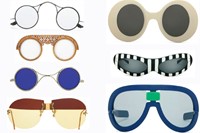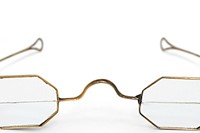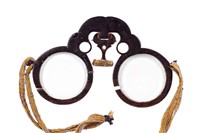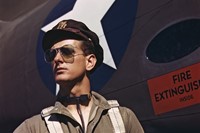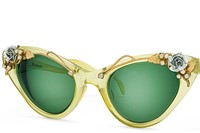It would be difficult to find a better fusion of style and practicality than can be found in a pair of glasses. Originally considered an unfashionable necessity, it wasn’t until the beginning of the 20th century that designers began to recognise
It would be difficult to find a better fusion of style and practicality than can be found in a pair of glasses. Originally considered an unfashionable necessity, it wasn’t until the beginning of the 20th century that designers began to recognise that the humble glasses could contribute to an overall look and become a trademark of the wearer. Musical figures such as Buddy Holly and John Lennon were regularly photographed wearing their own iconic frames. Now, with a book surveying the last 500 years of spectacle design, New York eye wear designer and collector Moss Lipow shows us why contact lenses and laser eye treatments – despite the advances they represent – will never dilute our demand for the more traditional technology.
"It wasn’t until the beginning of the 20th century that designers began to recognise that the humble glasses could contribute to an overall look and become a trademark of the wearer"
The result of two decades spent scouring auction houses, garage sales, flea markets and more recently, eBay, Eyewear: A Visual History showcases everything from the simple and refined to the decadent and outrageous, opening the doors to the world’s most distinguished collections, one of which belongs to Lipow himself. Compiled chronologically, and interlaced with a stunning series of stills, and images taken from magazines and adverts, the first section of the book takes an illuminating look at the early examples of frames. Benefiting from the spectacularly high resolution in particular is a set of horn scissor glasses featuring pearl and faux tortoise shell patterns, and a set of beautifully decorated French miniature telescopes from the 18th and 19th centuries respectively. Subsequent sections go on to exhibit a dazzling array of designs from such illustrious names as Pierre Cardin, Oliver Goldsmith, Silhouette, and Ray Ban amongst others. While Lipow finds space for discussion, examining the subject of brand licensing and the impact of the Asian eyewear market, Eyewear is, above all, a deliciously rich photomontage. Snippets of insider information are found throughout, including a particularly fascinating highlight: how the birth of the eyeglass can be linked to the demise of the ornamental hair comb.
Eyewear: A Visual History is published by Taschen and is available now.
Text by Fiona Cook

